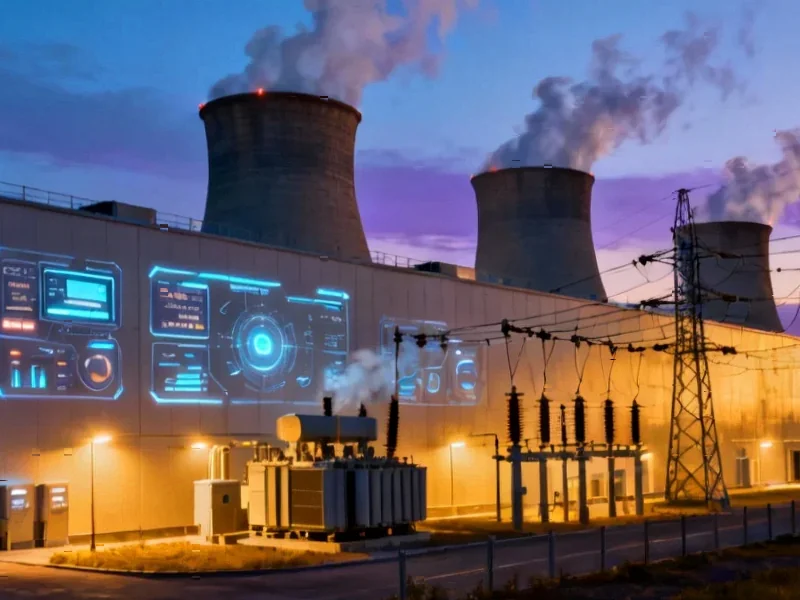According to DCD, Microsoft has signed a massive $9.7 billion deal with AI cloud provider Iren to access the latter’s Nvidia GB300 GPUs over a five-year period. The agreement includes Microsoft providing 20 percent in prepayment, with the GPUs being deployed at Iren’s data center campus in Childress, Texas, in phases through 2026. Iren has separately committed to purchasing $5.8 billion in GPUs and ancillary equipment from Dell, while the Childress campus features 750MW total capacity with 200MW dedicated to liquid-cooled data centers. Iren co-CEO Daniel Roberts called the partnership a “milestone” that validates the company’s AI Cloud platform, while Microsoft’s Jonathan Tinter emphasized Iren’s expertise in building integrated AI infrastructure. This massive commitment reflects Microsoft’s broader strategy of securing AI compute capacity through third-party providers amid infrastructure constraints.
The GB300 Architecture Revolution
The Nvidia GB300 represents a fundamental shift in GPU architecture that makes deals like this essential for cloud providers. Unlike traditional discrete GPUs, the GB300 leverages Nvidia’s NVLink technology to create massive compute clusters with unprecedented memory bandwidth. Each GB300 system essentially functions as a single logical GPU with terabytes of shared memory, eliminating the communication bottlenecks that plague traditional multi-GPU setups. This architecture is particularly crucial for training the largest foundation models, where memory constraints often force developers to use complex model parallelism techniques that reduce efficiency.
Why Liquid Cooling Is Non-Negotiable
The specific mention of 200MW dedicated to liquid-cooled data centers highlights a critical technical challenge facing AI infrastructure. Traditional air cooling becomes physically impossible at the power densities required by modern AI clusters. A single rack of GB300 systems can draw 120-150kW, compared to 10-15kW for conventional cloud servers. Liquid cooling isn’t just an efficiency improvement—it’s an absolute requirement for deploying these systems at scale. The transition represents a fundamental redesign of data center infrastructure, requiring specialized plumbing, heat exchangers, and cooling distribution units that most existing facilities cannot support.
The Hyperscale Capacity Crisis
Microsoft’s $33 billion in recent compute deals with various providers reveals a structural problem in cloud infrastructure. Traditional hyperscale data centers were designed for web services and enterprise applications, not the concentrated power demands of AI training. The lead time for building new facilities with adequate power allocation often exceeds two years, creating an immediate capacity gap. This has forced cloud providers to adopt a hybrid strategy: building their own AI-optimized facilities while simultaneously leasing capacity from specialized providers who can move faster. The prepayment structure in this deal suggests Microsoft is essentially funding Iren’s expansion to secure priority access to future capacity.
From Bitcoin to AI: Infrastructure Repurposing
Iren’s transition from cryptocurrency mining to AI cloud services represents a natural evolution of infrastructure expertise. Both applications require massive, low-cost power and high-density computing, but the business models differ significantly. Cryptomining operates on thin margins with volatile returns, while AI compute offers stable, long-term contracts with enterprise customers. The company’s existing power portfolio and experience with high-density computing give them a significant advantage over traditional data center operators. However, the technical requirements for AI workloads are substantially more complex, involving sophisticated networking, storage hierarchies, and orchestration software that mining operations didn’t require.
The Coming Infrastructure Convergence
This deal signals an emerging trend where specialized infrastructure providers become essential partners rather than competitors to hyperscalers. The capital requirements and technical complexity of building AI-optimized facilities have created a new layer in the cloud ecosystem. We’re likely to see more vertical integration, where companies like Iren control everything from power generation to GPU deployment, while hyperscalers focus on the software layer and customer relationships. This division of labor allows each player to focus on their core competencies while meeting the explosive demand for AI compute. The long-term implication is that cloud infrastructure may become increasingly fragmented, with multiple specialized providers serving different segments of the AI workload spectrum.




